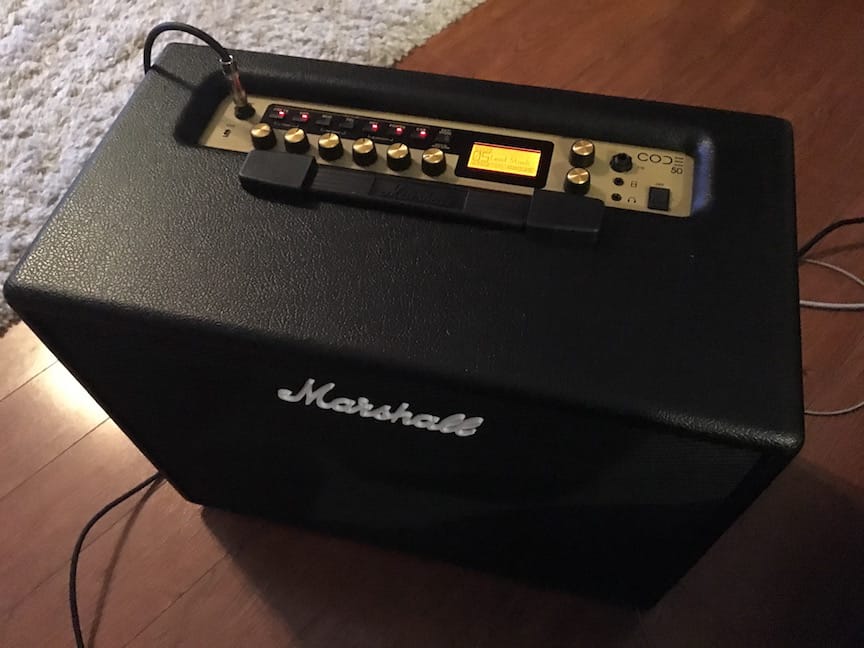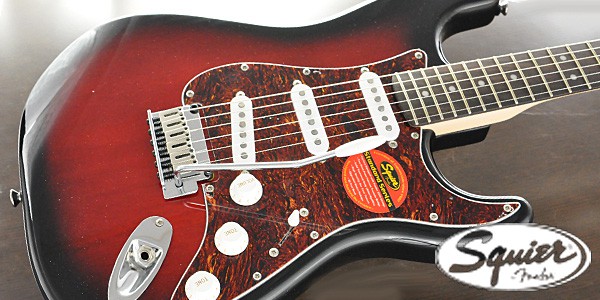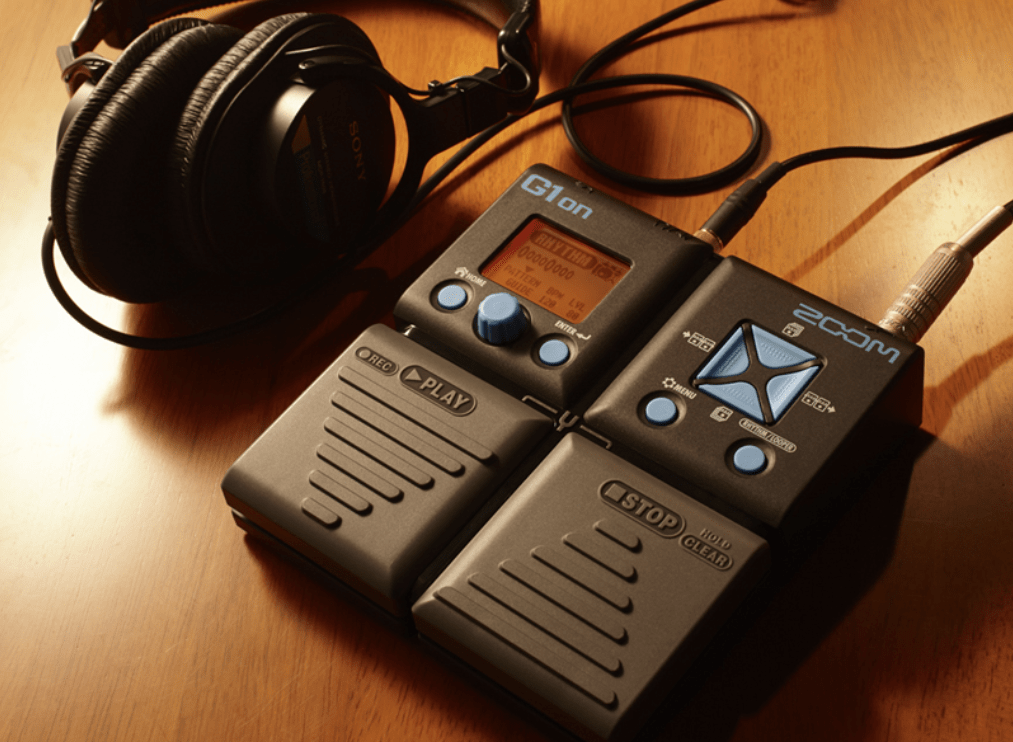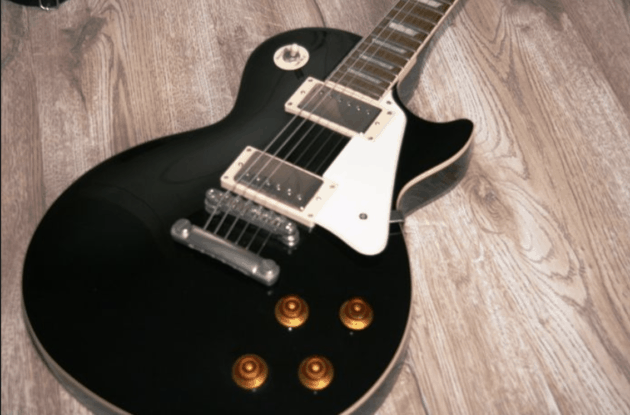Review: Marshall Code50 – can you fit all the classic Marshalls in one box?
A long time ago, when I was just confident enough with my guitar playing to think about starting a band, I knew my little 10-watt beginner’s practice amp wouldn’t cut it.
There was just one brand I wanted, and that was Marshall. I got one of their original Valvestate hybrid amps, a phenomenal noisy 100 watt beast, with a valve preamp to take it away from the harshness of a solid state amp, but without power valves, so it wouldn’t be quite the same as the tone I loved.
Before we begin, make sure you’re ordering Marshall from a legitimate retailer, NOT from a counterfeit seller. For your convenience, here is the Amazon link to an authentic Marshall retailer.The Valvestate series is long gone, and in the current line up of Marshalls, the Code range seems to be the nearest equivalent in terms of pricing and target users.
But it’s so much more than a valve preamp…
Core specs
I’ve outlined the usual specs you’d look at in an amp below.
| What’s its output? | 50 watts | |
| Valve, solid state or hybrid? | At this price? Solid state baby… | |
| What speaker configuration does it have? | One twelve inch speaker | |
| How many effects does it have? | 24 | |
| How many channels does it have? | One. Or infinity. It depends on your perspective |
That’s all great, but it doesn’t bring you to the most exciting feature of the Code series. While back in the day, I was delighted with a valve preamp, the code series allows you to select a preamp to emulate, as well as power amp emulation too! You’re given a choice of 14 preamps and four power amps, all intended to be mixed and matched so you can make it sound like any classic Marshall.
O. M. G.
Parts
It’s a long time since the Valvestate amps were on the market, so I can’t make a direct comparison, but it looks as if the Code series is aimed at a similar market, namely, intermediate guitarists who have outgrown their practice amps and are looking to get gigging, but don’t have megabucks for a nice vintage valve amp just yet.
I hear that.
With all that in mind, costs will need to be cut, and that starts with the lack of any actual valve at all. Everything in this box is a digital emulation. That’ll save a fortune. Secondly, as it’s not one of their premium amps, this is more than likely made in the east somewhere, rather than at home in the UK.
With all the digital stuff going on, it’s probably no surprise that the Code50’s top panel looks like a cross between a multi-effects unit’s controls and a regular amp.
In addition to the usual jack plug input and traditional knob controls for EQ, volume, master, and gain, it comes with eight buttons and an LCD screen for selecting your valve emulations, and a mini-USB output. It has a further two knobs for tweaking the parameters of your effects, two mini jack plugs for your headphones and an auxiliary audio input, and a jack plug for a footswitch.
That’s a busy panel!
Construction

With a name like Marshall, even with their cheaper and mid-range priced models, you know the one thing they won’t skimp on is build quality. It’s not worth the risk to their name. When it comes to amps like this, that are very much intended to be gigged, they know what they’re doing.
Seriously, if this breaks – or any other Marshall – I’d say there’s at least a 90% chance that it’s on you. Sorry.
Looking at the amp more closely, and how it’s actually been built, it’s no surprise that the workmanship and finish is very clean. There are no gaps in the wood or scratches on the tolex, and the finish where the control panel meets the enclosure is spot on. There’s nothing to fault here.
I find myself needing to become accustomed to a Marshall with the controls on top rather than the side, with the front grille covering the entire front of the amp – it does look more like an extension cabinet.
That being said, even digital amps, without the weight of valve amps, or the delicacy of actual valves, still need to be looked after. Those digital insides are still connected with wires that can come loose, and speakers still don’t like it if the controls aren’t set to zero when the amp is being turned on or off.
Tones

The worse thing about reviewing modern amps with lots of digital modeling, is that I can’t get to everything. In the interest of trying to give a balanced review, I have both a single coil and a humbucking guitar on standby.
Starting with the single coil, there’s a familiar gentle hum when I turn on the amp. I set the EQ to my favorite settings: bass at four, and middle and treble each at six, and set the gain to six also. I’m going to go straight for the sounds I want to hear.
I’m on a bit of a Smashing Pumpkins buzz at the moment, so I dialed in the sounds of JCM800, as used by Billy Corgan.
Did I immediately start sounding like Billy? No, don’t be silly. He had different valves and played through a half stack. Even with the cab emulation on the Code50.
It may not have sounded like Zero, but it wasn’t a bad sound. The problem is that unless you have these classic valve amps to hand, you kind of just have to take Marshall’s word at the accuracy of the emulation.
Switching to a Les Paul, and I opted for some 1962 Bluesbreaker sounds. With both pickups selected, I was able to get a highly satisfying crunchy, blues rock sound. Again, I’ve no way of telling how accurate the emulation was, but it sounded great to me, and that’s what’s important.
Playability
As with any amp or multi-effects unit with lots of options, the playability of the Code50 is essentially endless.
I didn’t have much chance to play with the effects on board, but they were what you’d expect from such a product: adequate, but very dry and, well… digital sounding! I mean, sure, the delay setting will give a delay sound, but don’t be expecting it to sound like a vintage tape echo or anything.
There a dedicated footswitch available for the Code series of amp. It comes with four switches for you to go directly to your presets without having to take your hands off your guitar when you’re playing a gig. That’s cool, because it essentially lets you change amp mid song! What a time to be alive!
The USB port allows you to connect your amp to a computer, so you can download further patches to the amp.
Conclusion
Marshall Code50 is definitely a great amp for intermediate guitarists who need to go louder as they embark on their journey into the realm of live music.
It will certainly provide them with plenty of choices in terms of tones. In my experience, I’d put money on them finding one tone that they keep going back to, and that’ll provide the inspiration for their next step up the gear-purchasing ladder, into all-valve glory.
Obviously, purists will be super-dismissive of what the Code50 does and achieves, but good luck to them – it’s not aimed at them anyway.





